Here’s a look at a couple of notebooks I couldn’t resist buying at Kinokuniya, a store in Manhattan that specializes in books, movies, stationery and other Japanese items.
The first is a quite unique notebook, made by Pilot and branded “THE-II” on the front. The cover is a very retro leather-textured plastic:
But here’s what really sets it apart– thumb-indexed sections, like a dictionary!
One thing I don’t like about the notebook is that the cover overhangs the paper edges by quite a lot. The cover is very flexible so those corners would get bent pretty quickly with active use.
The inside cover is grey paper, with no printing on it.
The first page has one of those odd, somewhat nonsensical Japanese-English slogans: “THE-II : ALL PREPARATIONS ARE COMPLETED.”
There’s some index pages at the front of the notebook:
It’s not the best in terms of opening flat– I was a little worried the binding could fall apart.
From the font used for the stamp on the back, it appears to be made by the same Pilot company that makes pens.
A comparison shot, next to a Piccadilly notebook. The Pilot notebook is wider, approximately 3 3/4 x 5 1/2″.
In the shot below you can also see the difference in the paper color: the Piccadilly has a warm, creamy tone, while the Pilot notebook is a very cool white.
The paper is very smooth, and feels a bit lighter weight than most notebooks, with some bleed-through from various pens:
My second purchase was a very cute little loose-leaf binder by Maruman, again shown next to a small Piccadilly notebook:
This photo above shows something that often annoys me about looseleaf notebooks– the front and back covers are rarely parallel, as the spine has to be wide enough to leave room for the rings, and you can’t fit in enough paper to fill out the thickness. I’ve often tried to solve this by using post-it notes or something else to pad out the covers on the inside.
This notebook has a similar thumb-index look to it, but these are just cut-outs in the black plastic cover which reveal the rainbow-colored divider tabs within. First there’s a black page, then white dividers with colored tabs. I think these tabs must be a Maruman trademark, as I have another binder by them that is at least 10 years old and came with the same tabs.
The notebook includes a small amount of lined paper.
There’s also a clear plastic top-opening envelope.
The spine shows off the rainbow colors:
The looseleaf binding works in an unusual way, swinging to the side to open:
The paper is similar to that of the Pilot notebook: a cool white, nice and smooth but not the best for bleed-through.
The Japanese do make some great stationery! It’s been several months since I bought these and I’m already itching to go back to Kinokuniya and see what’s new there!



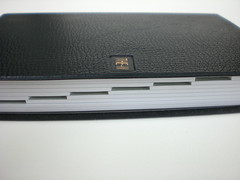
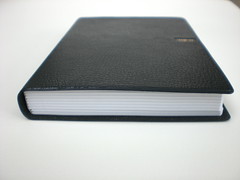
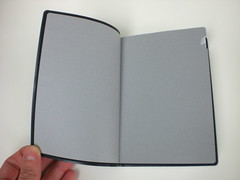
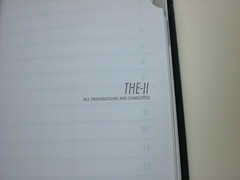
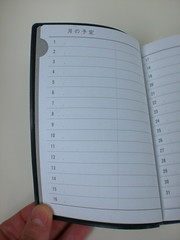
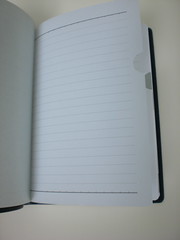
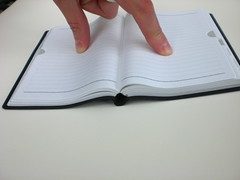


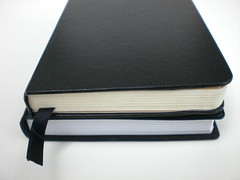
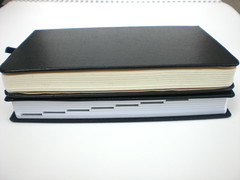
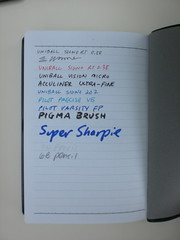
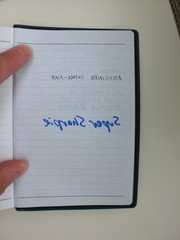
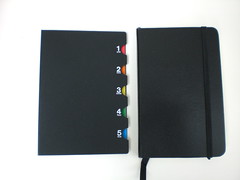


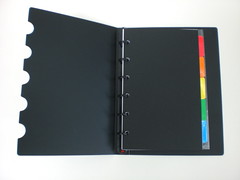
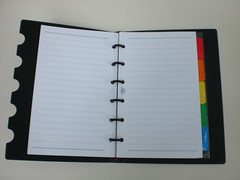
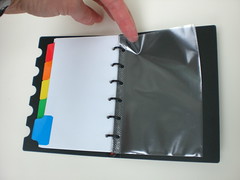

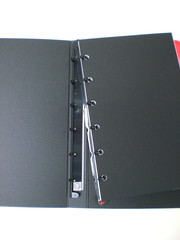


I LOVE that store. I have to limit my visits to once a month so I don’t go broke.
I will be buying that notebook next month.
There is a Kinokuniya store in Los Angeles, too. The pictures on the website make it look nicer than it really is (which was disappointing, considering that it took me two hours to drive there), but I was finally able to find some Japanese notebooks at reasonable prices that I haven’t found anywhere else, and that I plan to review eventually.
I was in the Kinokuniya shop in Japantown San Francisco, in about 2005. I bought several Apica notebooks there and it wasn’t until years later that I discovered Richard Brautigan used to frequent that place. His book “An Unfortunate Woman” was written in a notebook he bought there for $2.50 (in 1982), with a Pilot ballpoint pen he also bought there.